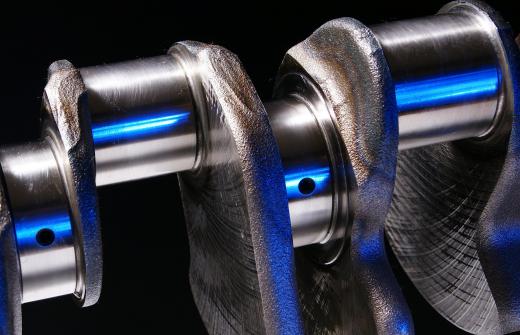A compressor is a device that moves air, gas or liquid through a machine’s components. Compressors usually have a cylinder chamber with a piston that moves up and down as a crankshaft turns. The movement of the piston changes the pressure within the cylinder so that the compressor valves will open and close, moving the air or other substance through a cylinder and into the machine’s other components. Compressor valves are what control the flow of the air through the machine.
Compressors have two different types of valves, each of which allows the substance to flow in only one direction. Suction valves control the flow of the substance into the piston chamber or cylinder. The discharge valve controls the flow of the substance out of the piston chamber. Each type of compressor valve allows air to flow in only one direction, and only one of the valves will be open at a time.

The two types of compressor valves work together during one full rotation of the crankshaft or one rise and fall of the piston inside the cylinder. When the piston moves down, it creates more room in the chamber above the piston. The change in pressure opens the suction valve, and the substance, such as air or coolant, is sucked into the cylinder chamber. The suction valve remains open until the piston reaches the lowest point in its cycle.
When the piston moves up, the substance begins to be compressed. The increase in pressure in the substance forces open the discharge valve, and the substance flows out of the cylinder. The piston continues to rise, pressing the substance out of the cylinder through the discharge valve. The discharge valve remains open until the piston reaches its highest position in the chamber.
There are different ways that compressor valves are constructed. In some cases, the valves are spring-loaded. When the pressure above the valve plus the spring force is less than the pressure below the valve, the valve opens, and the substance being compressed is forced in. Other compressor valve types include finger valves and plate valves. No matter what kind of compressor valve is used, pressure ratios are important in determining when the valves open and close.
A compressor valve is essential to the correct operation of a compressor. Designing a compressor and choosing the correct compressor valve requires an understanding of pressure and force within a closed system. The valves have to be chosen to withstand the repeated exposure to high pressure in the system and need to be efficiently designed to control the flow of the substance with a high level of precision.
